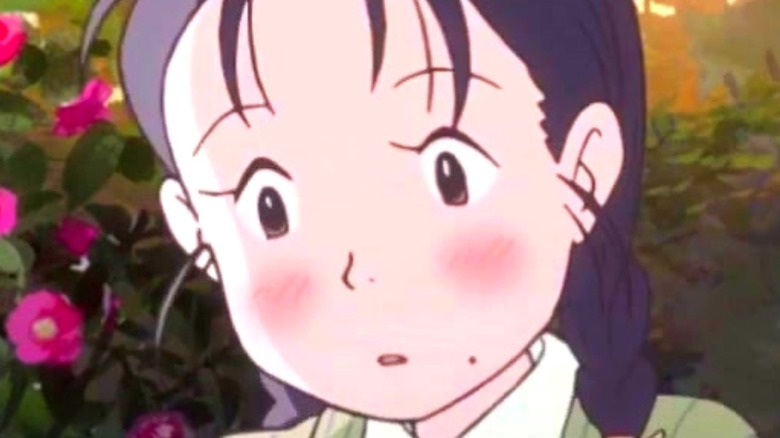The Ending Of In This Corner Of The World Explained
The 2016 animated film "In This Corner of the World" focuses on the life of Suzu Urano (Rena Nōnen), who attempts to navigate her role as a newly married woman amid World War II. The movie, inspired by Fumiyo Kōno's manga series, begins when Suzu is just a child. In the first scene, the daydreamer tells her younger sister, Sumi (Megumi Han) that a monster briefly kidnapped her and a boy — who ends up being her future husband, Shusaku Hojo (Yoshimasa Hosoya) — before they managed to escape. Years pass, and Shusaku, who is from Kure, travels to Hiroshima to propose to Suzu. The 18-year-old agrees to marry him and uproots herself to stay in his family's home.
During her first months of marriage, she faces many hardships, like having to ration food and being ridiculed by Shusaku's sister, Keiko (Minori Omi). However, she soon becomes a valued member of the family and has a particularly strong relationship with Keiko's daughter, Harumi (Natsuki Inaba). Unfortunately, any sense of normalcy is taken after a bombing raid kills Harumi. Suzu is also mangled from the explosion and no longer has a right hand.
Her situation only worsens following the atomic bombing of Hiroshima. After Japan surrenders, Suzu laments that she "wanted to die a daydreamer" and is devastated that it is no longer a possibility. Despite all of these tragedies, the film's ending is not entirely bleak. Here is the ending of "In This Corner of the World" explained.
Suzu still has the ability to daydream
Months after the destruction of Hiroshima, Suzu reunites with Sumi. Despite suffering from the effects of radiation poisoning, her younger sister seems to be in good spirits. She even jokes that she is disappointed that she is not able to work due to her illness. Suzu curls up beside her and tells a fanciful story about their brother, Yoichi, who is presumed dead after serving time in the navy. She informs her ailing sister that he is actually living on an island with his wife, who happens to be a crocodile. Sumi laughs at the tale before solemnly telling Suzu that both of their parents are dead. The young housewife takes the news relatively well, perhaps because she has lost so much already.
After Suzu spends time with her sister, she and her husband walk on the bridge where they first met. As she thanks him for "finding [her] in this corner of the world," the monster from the beginning of the movie, who is supposed to be Yoichi, is seen carrying his crocodile bride. This whimsical moment indicates that Suzu has not lost her ability to daydream after all.
Suzu decides to take care of a child, whose mother had died horrifically
The movie abruptly cuts to a scene showing a young girl eating a meal with her mother before the atomic bomb was dropped. The audience then sees the severely wounded woman holding her child's hand, attempting to drag her along to safety. It is then revealed that the girl stayed with her mother until her rotting body became maggot-infested. As the woman's hand is also missing, it can be assumed that this moment is supposed to parallel what happened to Suzu and Harumi during the air raid. The sequence is also incredibly visceral and gory, in contrast to the rest of the film. In scenes prior, most of the violence is depicted with doodles, almost sheltering the audience from the horrors of war. But soon, we, like Suzu, are forced to lose our innocence, which has a sickening effect.
The child eventually meets Suzu and Shusaku, who kindly allow her to eat some of their food. They recognize that she is alone and decide to take her to Kure. The Hojos welcome her in, despite the fact she is covered in lice. Keiko even wonders out loud if the girl could "fit into Harumi's clothes," suggesting that she may be beginning to heal. The final shot of the movie shows the Hojos' home — damaged but still standing, much like Suzu and her family.


